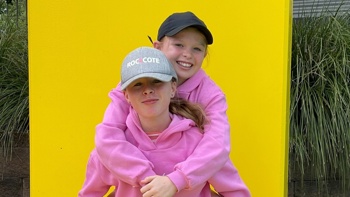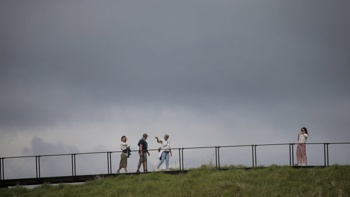They may look cute and cuddly but Dama Wallabies are quite the opposite.
The menacing marsupials are officially classified as an 'unwanted organism' in the Biosecurity Act.
"We've had wallabies in the Rotorua area for over 100 years now," said Dale Williams, Biosecurity Officer for the Bay of Plenty Regional Council.
"They were first liberated on Kawau Island in the Hauraki Gulf back in the 1870s. Around 1912 someone brought them to the Bay of Plenty and liberated them. From that time, they've dispersed and they now cover in excess of 200,000 hectares."
That's bad news for our forests and the native birds who live in them.
"Wallabies are browsing mammals," said Williams.
"They're very thorough at eating our native forest seedlings. And our native forests haven't evolved - not many of the plants have defence mechanisms like prickles or chemicals so the wallabies can take out a whole host of those native seedlings, stopping them growing into adult trees.
"Over time the range of species in the forest will decline so there'll be less diversity. Some of those species the wallabies target are also the food species for our birdlife. They're the ones that have the berries or the leaves that are particularly palatable for birds as well.
"The forests adjacent to the Rotorua lakes have been seriously impacted and that was becoming obvious even in the 1970s. We've been trying to figure out how to deal with this situation for decades now. We've really just been trying to stop the population spreading further than what they are now," said Williams.
For the most part the Bay's geography has done a good job of slowing down the spread, with rivers being a major barrier to dispersal.
"A wallaby won't by choice go into water," said Williams. "Some of the rivers, like the Kaituna River, have been an effective barrier, the Tarawera River to some extent. But if you look at the streams up in the Mamaku Ranges they're all pointing towards the Waikato. So slowly but surely those animals are dispersing into the Waikato."
Dama Wallabies have also been found at Rocky Cutting Road in Welcome Bay.
But thanks to a $27.4 million grant from the Government's Jobs for Nature Programme, a variety of tools are now being used to combat the spread.
"Dogs have been around for hundreds of years, old technology!" Wiliams said. "They're a really good surveillance tool. The dog and dog handler can cover an area quite quickly and give us good feedback on presence or absence - 'we've got one wallaby there 'or 'no, it appears they haven't got to this place yet'."
While the dogs are on the scent, the dog handlers lookout for anything the wallaby leaves behind such as footprints, fur and droppings.
Dog handler Guus Knopers says the extra funding has provided a welcome boost for his dog squad.
"It has increased our staff numbers by at least double if not triple," he said. "We've trained several dogs through the certification process and we're starting to pair them with the new handlers now.
"They've got a muzzle on because we might be working in areas where there are highly endangered bird species, ground-dwelling birds."
Once the dogs have spotted signs of a wallaby, GPS co-ordinates are logged and cameras are installed.
"They're really good at telling us if we have a breeding population because you'll see a photograph of a big wallaby, a young wallaby, maybe two in one image," Williams said.
There's one more high-tech tool at the team's disposal - drones with thermal cameras to spot wallabies at night.
"The drone is giving you real-time information," Williams said. "They can pick up that there's three wallabies there, five over there and it's working out really well. By using the three tools together we're getting a very good idea of the extent of the population prior to us doing control."
With additional funding and new technology, Williams said the goal is now eradication.
"You've got to have that as your goal. There's an old saying, 'if you aim at nothing that is what you'll get'.
"I think eradication is a realistic goal. We'll know within five or 10 years whether it's achievable with our current tools."
Made with funding from NZ on Air.
Take your Radio, Podcasts and Music with you









